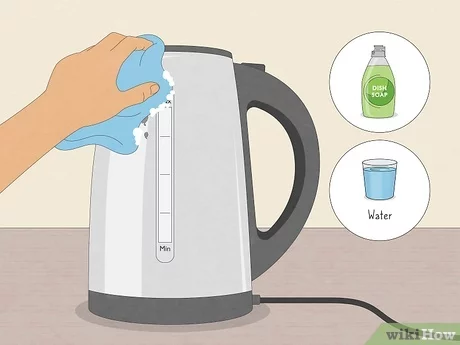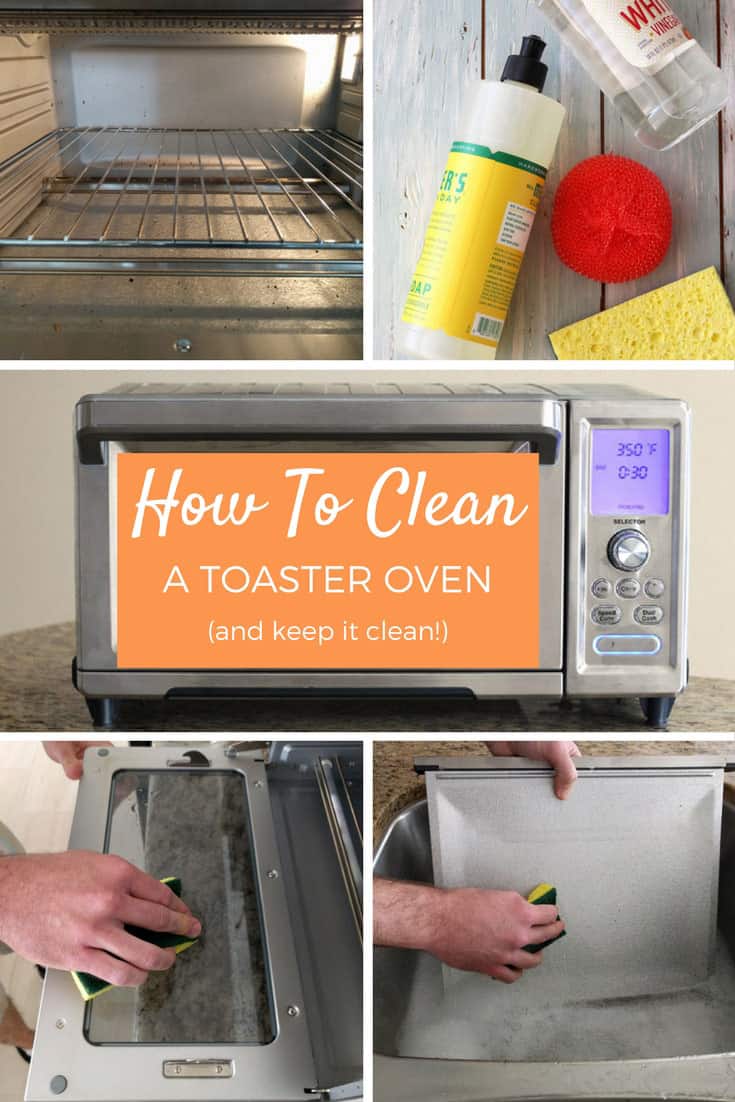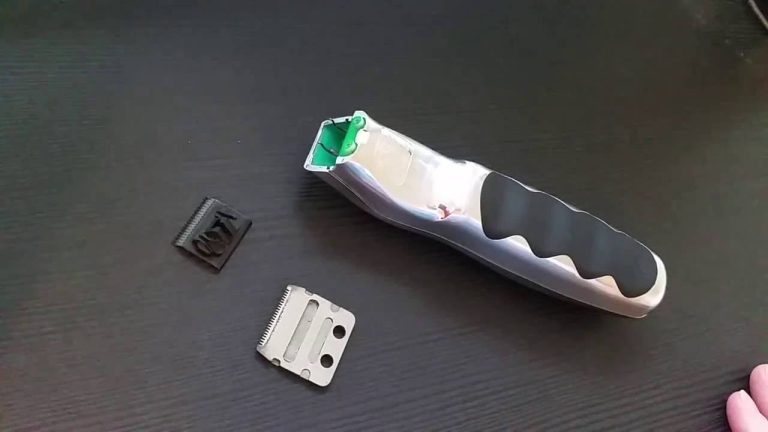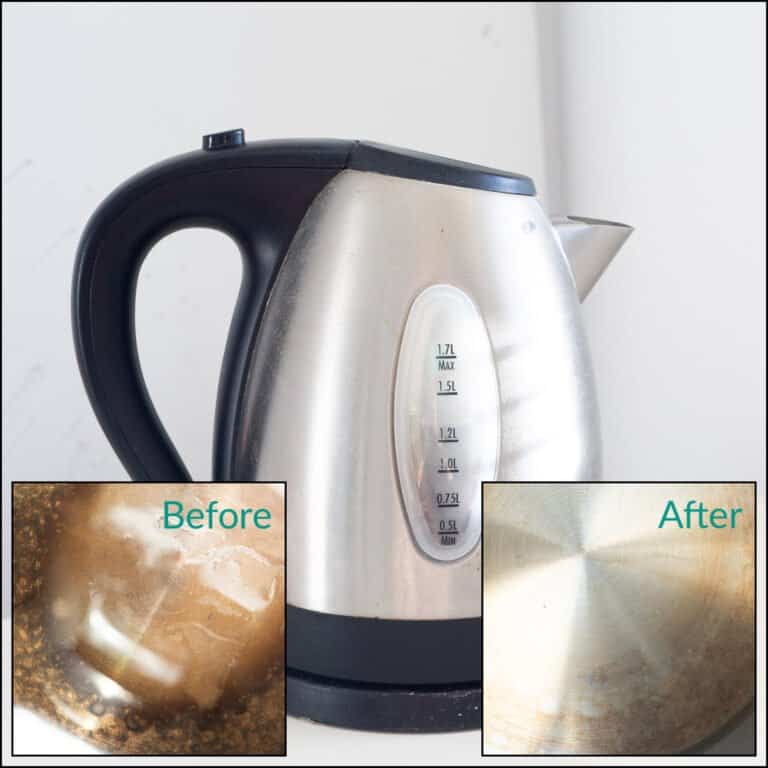How to Cut Your Hair With Beard Trimmer?
To cut your hair with a beard trimmer, first select a suitable length and attach the appropriate guard. Then, using the trimmer, begin cutting your hair in small, controlled sections, moving against the direction of hair growth.
Cutting your own hair with a beard trimmer can be a convenient and cost-effective option, especially when you can’t make it to the barber. With a few simple steps, you can achieve a neat and tidy haircut in the comfort of your own home.
We’ll explain how to cut your hair using a beard trimmer, offering practical tips and techniques for a successful DIY haircut. Whether you’re aiming for a simple trim or a shorter style, we’ve got you covered. So, grab your beard trimmer and let’s get started on achieving the perfect haircut from the comfort of your own home.
Choosing The Right Beard Trimmer For Hair Cutting
When it comes to cutting your hair with a beard trimmer, it is essential to choose the right tool for the job. A high-quality beard trimmer can make all the difference in achieving a professional-looking haircut from the comfort of your home. In this section, we will discuss the considerations you should keep in mind when selecting a beard trimmer for hair cutting. So, let’s dive in!
Considerations when selecting a beard trimmer
- Budget: One of the first things to consider when choosing a beard trimmer is your budget. Determine how much you are willing to invest in a trimmer, keeping in mind your long-term usage and quality expectations.
- Corded or Cordless: Beard trimmers come in both corded and cordless options. Corded trimmers provide continuous power but limit mobility, while cordless trimmers offer more flexibility but require recharging. Consider your preferred usage and convenience while making this decision.
- Length Settings: Different beard trimmers come with varying length settings. Determine the specific length or style you want to achieve with your haircut and ensure that the trimmer you choose has the necessary length settings to meet your requirements.
- Blade Quality: The quality of the blades is crucial for a smooth and precise haircut. Look for trimmers with high-quality, self-sharpening blades made from stainless steel or titanium for durability and sharpness.
- Usage: Consider how often you will use the trimmer and for what purposes. If you plan to use it for regular haircuts, invest in a trimmer that is designed for heavy-duty usage.
Understanding the different types and features of beard trimmers
Now that you have a clear idea of the considerations to keep in mind, let’s explore the different types and features of beard trimmers:
| Type | Features |
|---|---|
| Corded trimmers |
|
| Cordless trimmers |
|
| All-in-one trimmers |
|
| Waterproof trimmers |
|
By understanding the different types and features of beard trimmers, you can make an informed decision based on your specific needs and preferences. Remember to prioritize the considerations discussed earlier to ensure you choose a trimmer that meets your budget, functionality, and haircutting requirements.
Preparing Your Hair And Beard For Trimming
Before you start cutting your hair with a beard trimmer, it’s essential to properly prepare both your hair and beard. This will ensure a smooth and successful trimming process, helping you achieve the desired style. In the following section, we will cover two key steps in preparing your hair and beard for trimming: washing and drying, and combing and detangling.
Washing and Drying Your Hair Before Cutting
Begin by washing your hair thoroughly to remove any dirt, oils, or product buildup. This will provide a clean canvas for trimming and make the process easier. Use a mild shampoo and conditioner that suits your hair type to maintain its health.
After washing, pat your hair dry with a towel or allow it to air dry partially. Avoid using a hairdryer if possible, as excessive heat can dry out your hair and scalp.
Combing and Detangling Your Hair and Beard
Once your hair is dry, it’s crucial to comb and detangle it before you start trimming. This step ensures that your hair is free from knots or tangles, making the cutting process smoother and more precise.
Grab a wide-toothed comb or a brush specifically designed for detangling. Start at the ends of your hair and gently work your way upwards, gradually removing any knots. Be patient and avoid pulling or tugging on your hair, as this can cause breakage and unnecessary damage.
Similarly, comb and detangle your beard using a beard comb or brush. This will help separate the hairs and make it easier to achieve a neat and even trim.
Remember, taking the time to properly wash, dry, and comb your hair and beard before trimming is essential for a successful haircut. These simple yet crucial steps ensure that your hair is clean, tangle-free, and ready for the beard trimmer to work its magic.
Step-By-Step Guide: How To Cut Your Hair With A Beard Trimmer
Are you in need of a haircut but can’t make it to the salon? Don’t worry, you can easily cut your hair at home using a beard trimmer. With the right technique and a little bit of practice, you can achieve a fresh and stylish haircut in the comfort of your own bathroom. In this step-by-step guide, we will walk you through the process of cutting your hair using a beard trimmer, ensuring a professional-looking result.
Trimming the sides and back of your hair
When trimming the sides and back of your hair, it’s important to start with clean and dry hair. Begin by adjusting the length setting on your beard trimmer according to your desired length. Start at the bottom of your hairline, and using upward strokes, gently trim the hair to the desired length. Work your way up towards the top of your hairline, being careful to maintain an even length on both sides.
Next, you’ll want to focus on the back of your head. Use a handheld mirror or ask someone for assistance to ensure you can see the back of your head clearly. Starting from the bottom, use upward strokes to trim the hair, again ensuring an even length across the back.
Blending and tapering the hair length
Blending and tapering the hair length is crucial to achieve a seamless and natural-looking haircut. To blend the sides and back with the top, start by using a slightly longer length setting on the trimmer. With a gentle touch, go over the area where the sides and back meet the top of your hair, creating a smooth transition.
To taper the hair length, gradually decrease the length setting on your trimmer as you move towards the neckline. This will create a gradual fade and a more polished look.
Trimming the top of your hair
When trimming the top of your hair, you’ll want to envision your desired style and length. Comb your hair and decide how much length you want to remove. Start by using the longest length setting on your beard trimmer and work your way down, trimming small sections at a time. Take breaks in between to assess the length and make any necessary adjustments. Remember, it’s always better to trim less than to cut off too much hair at once.
Shaping your neckline and sideburns
To complete your fresh haircut, it’s important to shape your neckline and sideburns. Use the trimmer without a comb attachment to create a clean and defined neckline. Start from one side and work your way to the other, following the natural curve of your neckline. For the sideburns, determine the desired length and use the trimmer to achieve a neat and symmetrical look.
Once you’ve completed all the steps, take a moment to examine your haircut in the mirror and make any final adjustments if needed. Remember, practice makes perfect, so don’t be afraid to experiment and try new styles with your beard trimmer. With a little bit of patience and the right technique, you can become your own hairstylist and enjoy the convenience of cutting your hair at home.
Tips For Achieving Different Haircut Styles
Tips for Achieving Different Haircut Styles
Are you tired of spending a fortune at the barbershop every time you need a haircut? With the right technique and equipment, you can achieve a professional-looking haircut right at home. Using a beard trimmer for cutting your hair not only saves you time and money but also allows you to experiment with different styles. In this article, we will share tips on how to achieve different haircut styles using a beard trimmer. Whether you’re looking to create a classic fade, a textured haircut, or a buzz cut, we’ve got you covered!
Creating a classic fade with a beard trimmer
A classic fade is a timeless haircut that gives you a clean and polished look. With a beard trimmer, you can achieve this style with precision. Here’s how:
- Prepare your hair: Start by washing and drying your hair thoroughly. This will make it easier for the trimmer to glide through your hair.
- Select the right guard size: The key to achieving a fade is to gradually decrease the length of your hair. Start with a longer guard size and work your way down.
- Start with the sides: Begin trimming the sides of your hair, moving in an upward motion. Use short, controlled strokes to ensure an even cut.
- Blend the top and sides: Now, switch to a shorter guard size to blend the top and sides seamlessly. Use a comb as a guide to create a smooth transition between the two lengths.
- Refine the fade: Pay attention to any uneven spots and make the necessary adjustments. It’s essential to take your time during this step to achieve a flawless fade.
- Finish with styling: Once you’re satisfied with the fade, style your hair as desired. Apply some hair product to add texture and hold.
Achieving a textured haircut with a beard trimmer
A textured haircut adds volume and movement to your hair, creating a trendy and effortless look. Here’s how you can achieve it using a beard trimmer:
- Prepare your hair: Cleanse and towel dry your hair, ensuring it’s free from any product buildup.
- Choose the right guard size: To create texture, go for a guard size that leaves your hair slightly longer. This will allow you to control the amount of texture.
- Trim in different directions: Instead of cutting straight across, try trimming your hair in different directions. This will create varying lengths and give your hair a textured appearance.
- Focus on the top and front: Concentrate on the top and front sections of your hair, as these areas often need the most texture. Use your fingers to lift and guide the trimmer for a more natural result.
- Blend the sides and back: Use a comb as a guide while trimming the sides and back to ensure a seamless blend. Keep the guard size slightly longer for a softer look.
- Style with texturizing products: Once you’ve achieved the desired texture, use a texturizing spray or wax to add definition and hold to your hair.
Creating a buzz cut with a beard trimmer
The buzz cut is a popular choice for those who prefer a low-maintenance and stylish haircut. Here’s how you can create a buzz cut using a beard trimmer:
- Start with clean, dry hair: Make sure your hair is clean and dry to ensure an even cut.
- Choose the desired length: Decide on the length you want for your buzz cut. Most beard trimmers come with adjustable guard sizes, allowing you to customize the length.
- Begin from the sides and back: Starting from the sides and back, run the trimmer against the natural growth of your hair. Move in swift and steady motions to achieve an even cut.
- Continue to the top: Once you’ve finished the sides and back, move to the top of your head. Trim in the opposite direction of your hair growth for a consistent length.
- Refine and touch up: Use a smaller guard size or remove the guard altogether to clean up the edges and define the hairline. Pay attention to details to achieve a polished look.
- Clean up and style: Rinse off any loose hair and style your buzz cut as desired. You can apply a small amount of hair product for added texture or leave it as is for a natural look.
Maintaining And Cleaning Your Beard Trimmer
Keeping your beard trimmer clean and well-maintained is essential for achieving the best results when cutting your own hair. Not only does regular maintenance extend the lifespan of your trimmer, but it also ensures maximum performance and hygiene. In this section, we will explore the proper cleaning and maintenance techniques for your beard trimmer, as well as the importance of replacing blades and parts as needed.
Properly cleaning and maintaining your beard trimmer
To ensure that your beard trimmer continues to function optimally, it is crucial to clean and maintain it properly. Regular cleaning not only removes dirt, debris, and hair clippings from the device, but it also prevents the build-up of bacteria and helps maintain hygiene. Follow these steps to properly clean your beard trimmer:
- Unplug the trimmer: Before cleaning your trimmer, always make sure to unplug it from the power source to prevent any accidents.
- Remove excess hair: Use a small brush or toothbrush to remove any loose hair or debris from the trimmer’s blades and attachments. Be gentle to avoid damaging the trimmer’s delicate parts.
- Wash detachable parts: Some trimmers have detachable blades and combs that can be rinsed under running water. Check the manufacturer’s instructions to determine if this is suitable for your trimmer. If so, remove the detachable parts and rinse them thoroughly, making sure to remove all hair and product residue. Allow them to dry completely before reassembling.
- Disinfect with alcohol: To ensure hygiene, it is recommended to disinfect the trimmer’s blade with rubbing alcohol. Moisten a cotton ball or pad with alcohol and wipe the blade and other non-detachable parts. This step helps kill any bacteria or germs that may have accumulated on the trimmer.
- Lubricate moving parts: Some trimmers require regular lubrication to keep the blades moving smoothly. Check your trimmer’s manual for specific lubrication instructions and use a lubricating oil recommended by the manufacturer. Apply a few drops to the blades and other moving parts to keep them in top condition.
Replacing blades and parts as needed
Over time, the blades and other components of your beard trimmer may become dull, damaged, or worn out. Replacing these parts as needed ensures that your trimmer continues to provide precise and efficient cutting. Here are a few signs that indicate it’s time to replace certain parts:
- Dull blades: If you notice that your trimmer is not cutting as effectively as before, it may be due to dull blades. Replace them with new ones to maintain optimal cutting performance.
- Broken or damaged parts: If any part of your trimmer, such as combs, guides, or guards, becomes cracked, bent, or broken, it’s important to replace them. Damaged parts can affect the trimmer’s performance and potentially cause unnecessary discomfort during use.
- Worn-out batteries: If your trimmer is battery-powered and the batteries no longer hold a charge or show signs of depletion quickly, it may be time to replace them. Always use the recommended type and brand of batteries for your trimmer to ensure optimal functionality.
Regularly inspect your trimmer for signs of wear and tear and replace any faulty or worn-out parts promptly to maintain its performance and longevity. Remember to consult the manufacturer’s instructions or contact customer support if you have any doubts about replacing specific parts of your beard trimmer.
Common Mistakes To Avoid When Cutting Your Hair With A Beard Trimmer
Cutting your hair with a beard trimmer can be a convenient and cost-effective way to maintain your hairstyle at home. However, if you’re not careful, it’s easy to make some common mistakes that can leave you with less than desirable results. In this blog post, we will discuss three common mistakes to avoid when cutting your hair with a beard trimmer and how to achieve a professional-looking haircut right in the comfort of your own home.
Going too short too quickly
One of the most frequent mistakes people make when using a beard trimmer to cut their hair is going too short too quickly. It can be tempting to trim off a lot of hair at once, especially if you’re trying to achieve a drastic change in hairstyle, but this can lead to uneven and choppy results. Rather than taking off too much hair in one go, it’s best to start with a longer length setting and slowly work your way shorter as you become more comfortable with the process.
Another important aspect to consider when using a beard trimmer is the length guard or attachment you’re using. Each length guard corresponds to a specific hair length, so be sure to select the appropriate guard for the result you want to achieve. It’s better to start with a longer guard and trim more if needed, than to start with a shorter guard and risk cutting off more hair than intended.
Using incorrect techniques and angles
The way you hold and maneuver the beard trimmer can greatly affect the outcome of your haircut. Many people make the mistake of holding the trimmer at an incorrect angle, resulting in uneven lines and awkward shaping. To avoid this, hold the trimmer with a firm grip and use gentle, steady strokes in the direction of hair growth.
Using incorrect techniques can also lead to inconsistencies in hair length. For a more even result, ensure that you’re combing your hair straight before trimming, and take small sections at a time for a more controlled cut. Start from the sides and move towards the back of your head, following the natural shape of your head.
It’s also important to have adequate lighting when cutting your hair with a beard trimmer, as shadows can make it difficult to see the length and any uneven areas. A well-lit room or using additional small lamps can help you achieve a more accurate and even haircut.
Not properly maintaining your beard trimmer
Your beard trimmer is a tool that needs regular maintenance to ensure optimum performance and longevity. Neglecting to clean and oil your trimmer can result in a dull blade, which can pull on the hair instead of cutting it cleanly. This can lead to an uneven and uncomfortable haircut.
To prevent this, make sure to clean your trimmer after each use by removing any hair clippings and washing the detachable parts with warm, soapy water. Allow them to dry thoroughly before reassembling the trimmer. Additionally, regularly oiling the blades will help maintain their sharpness and ensure a smooth cutting experience.
Frequently Asked Questions For How To Cut Your Hair With Beard Trimmer
Can I Use My Beard Trimmer To Cut My Hair?
Yes, you can use a beard trimmer to cut your hair. It is versatile enough for both beard and hair trimming.
How Do You Cut Your Hair With A Trimmer?
To cut your hair with a trimmer, start by selecting the desired length guard and attaching it. Then, hold the trimmer firmly and slowly move it against the direction of hair growth. Maintain steady pressure and make small, straight strokes to achieve an even cut.
Finally, clean the trimmer and style your hair as desired.
How Do You Fade Your Hair With A Beard Trimmer?
To fade your hair with a beard trimmer, adjust the length settings gradually from a longer to shorter setting. Start at the top and work your way down, blending the hair for a smoother transition. Be careful and take your time to achieve the desired fade look.
Do You Shave Up Or Down With A Beard Trimmer?
To trim your beard with a trimmer, shave in the direction of hair growth.
Conclusion
Cutting your hair with a beard trimmer can be an effective and convenient way to maintain your hairstyle at home. With the right techniques and equipment, you can achieve professional-looking results without the need for a trip to the salon.
By following the step-by-step guide outlined in this blog post, you can confidently take control of your hair grooming routine. Remember to always start with clean, dry hair, use a proper technique, and be patient with the process.




